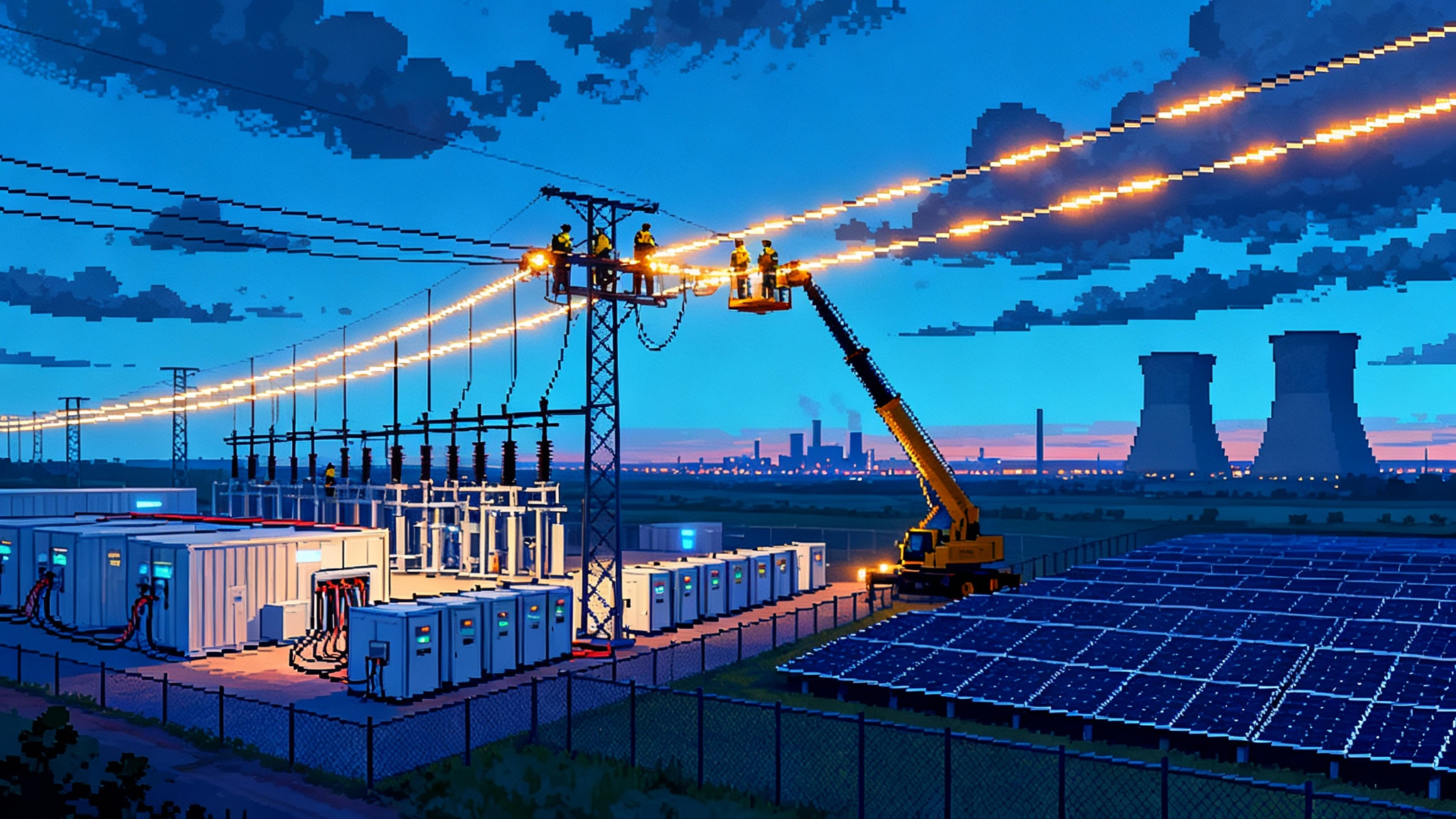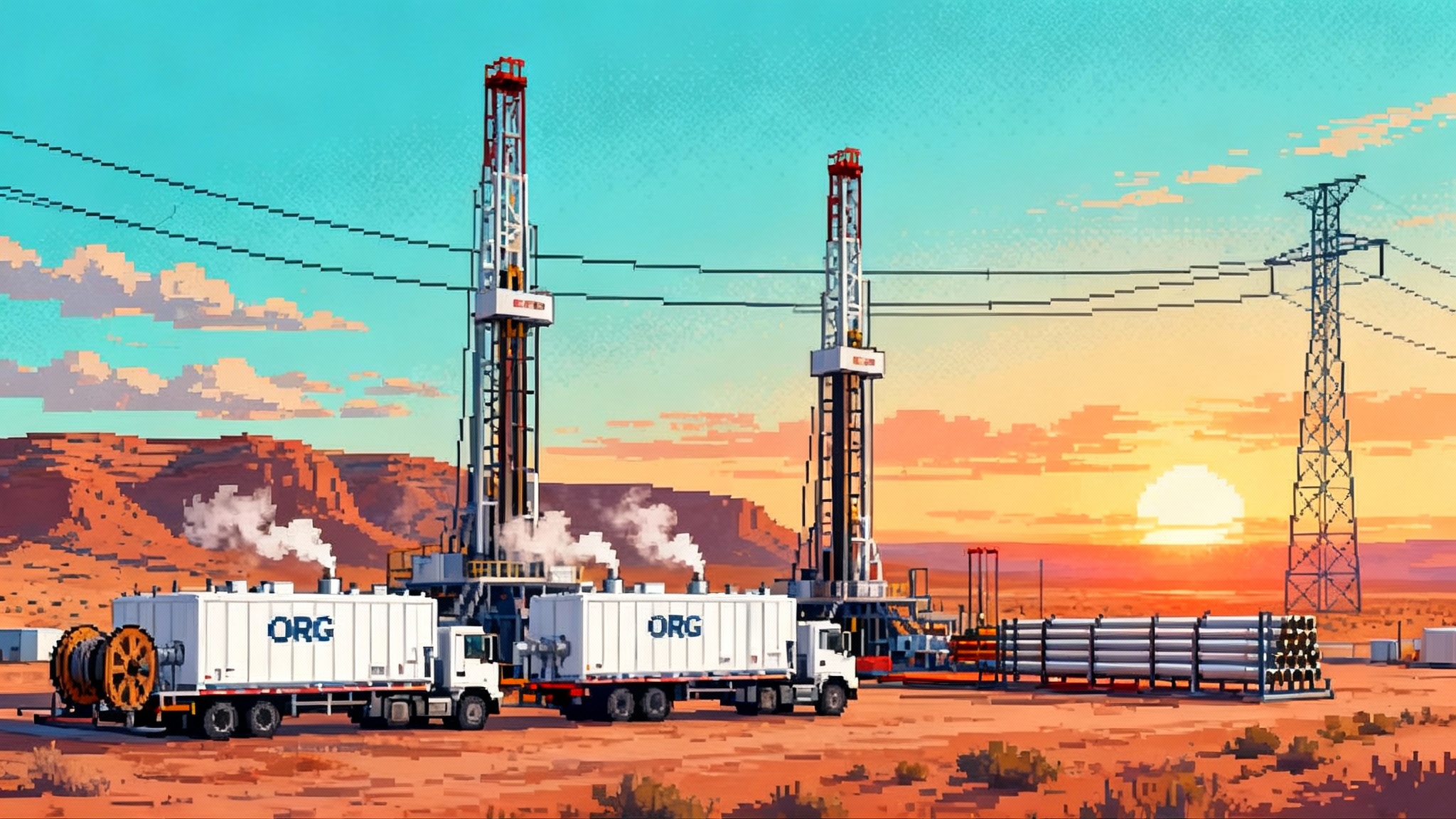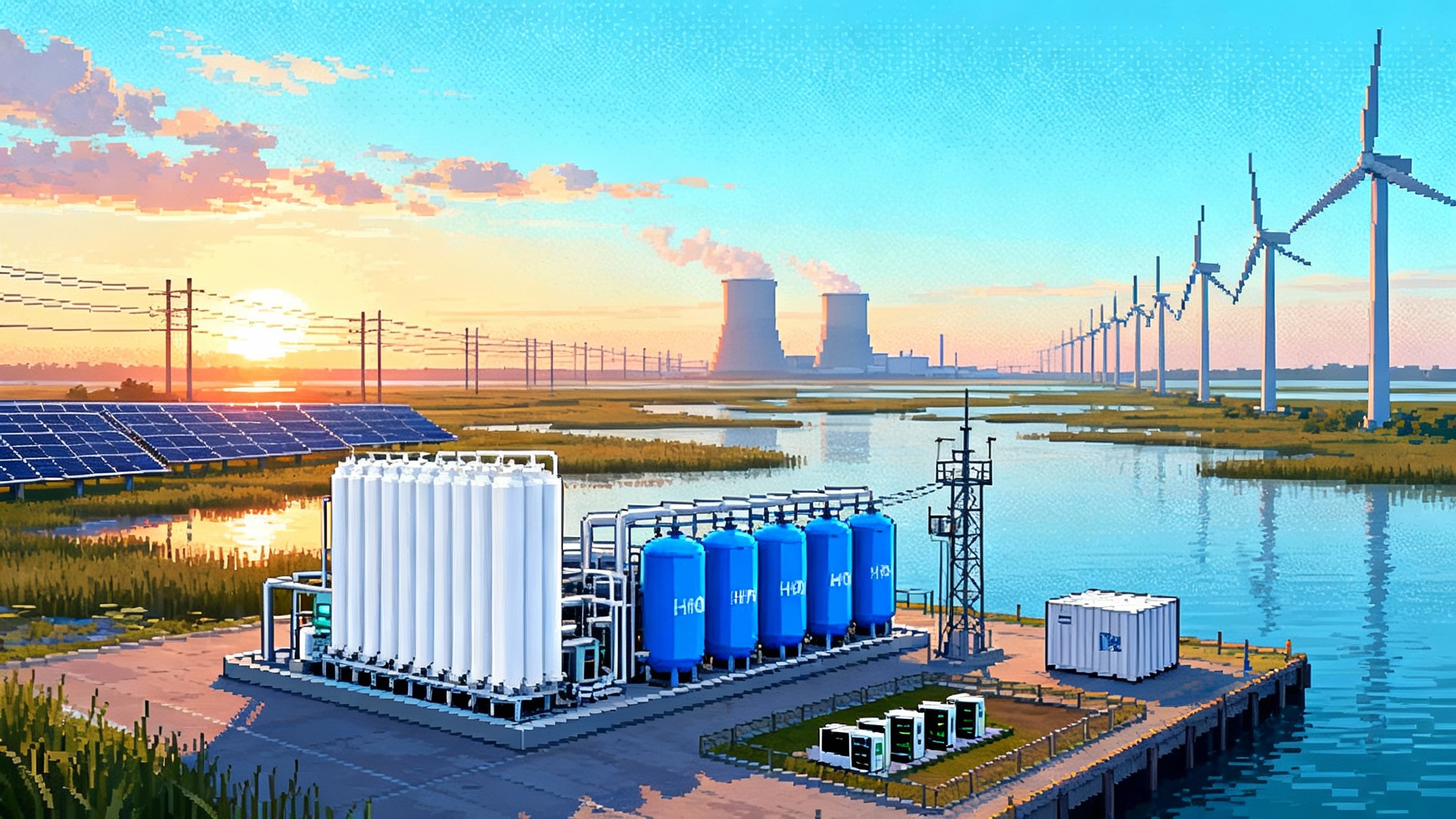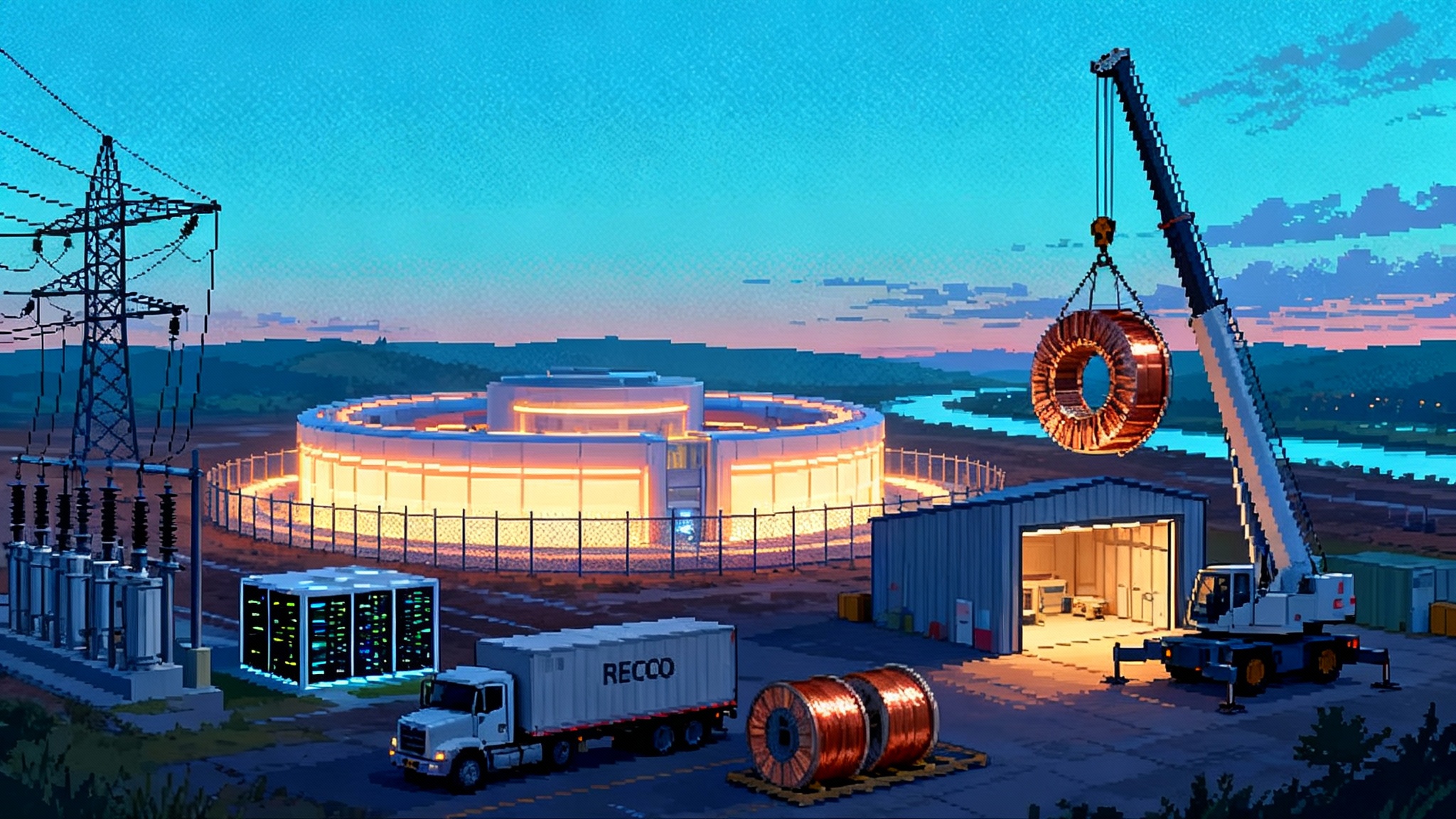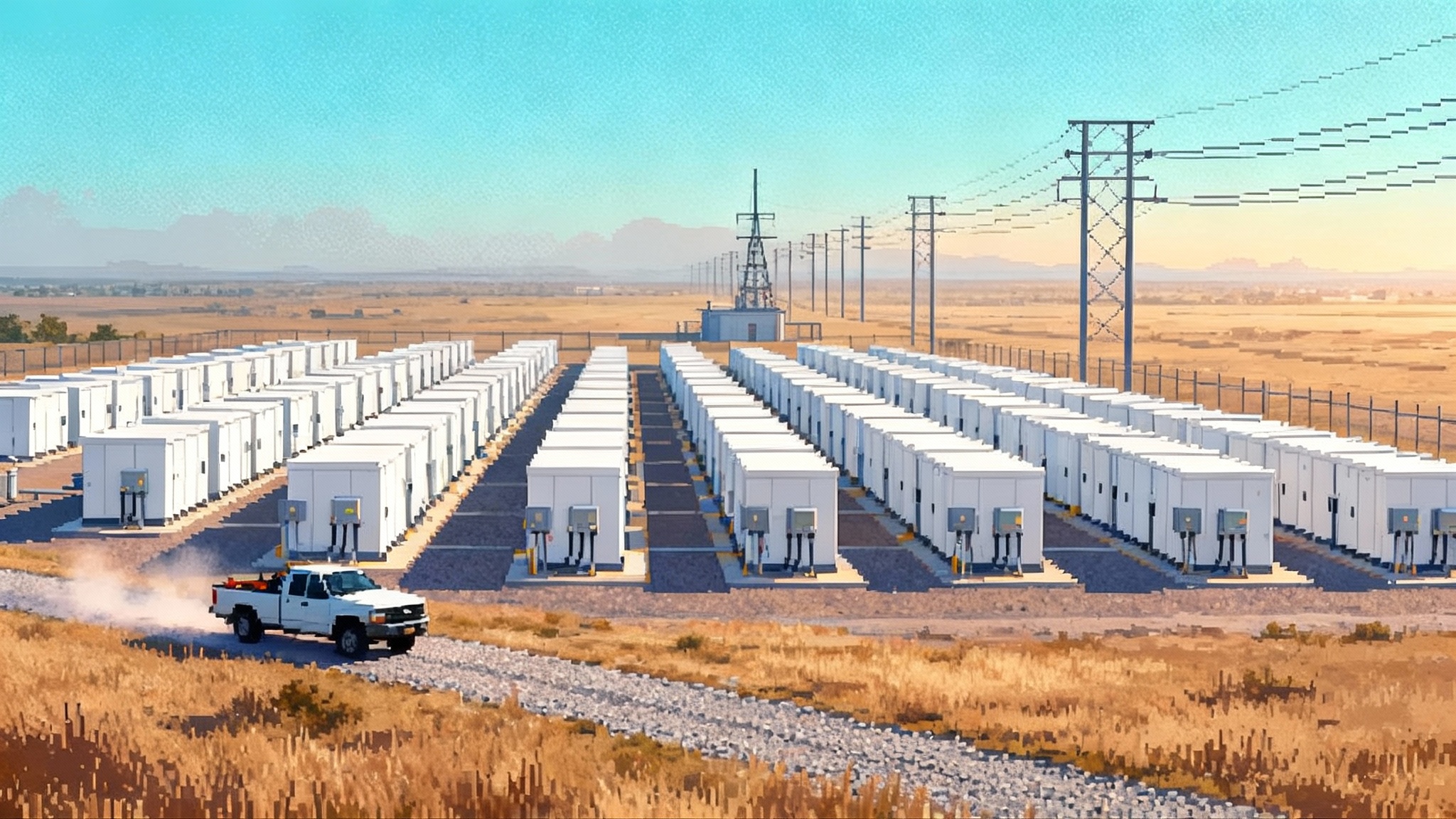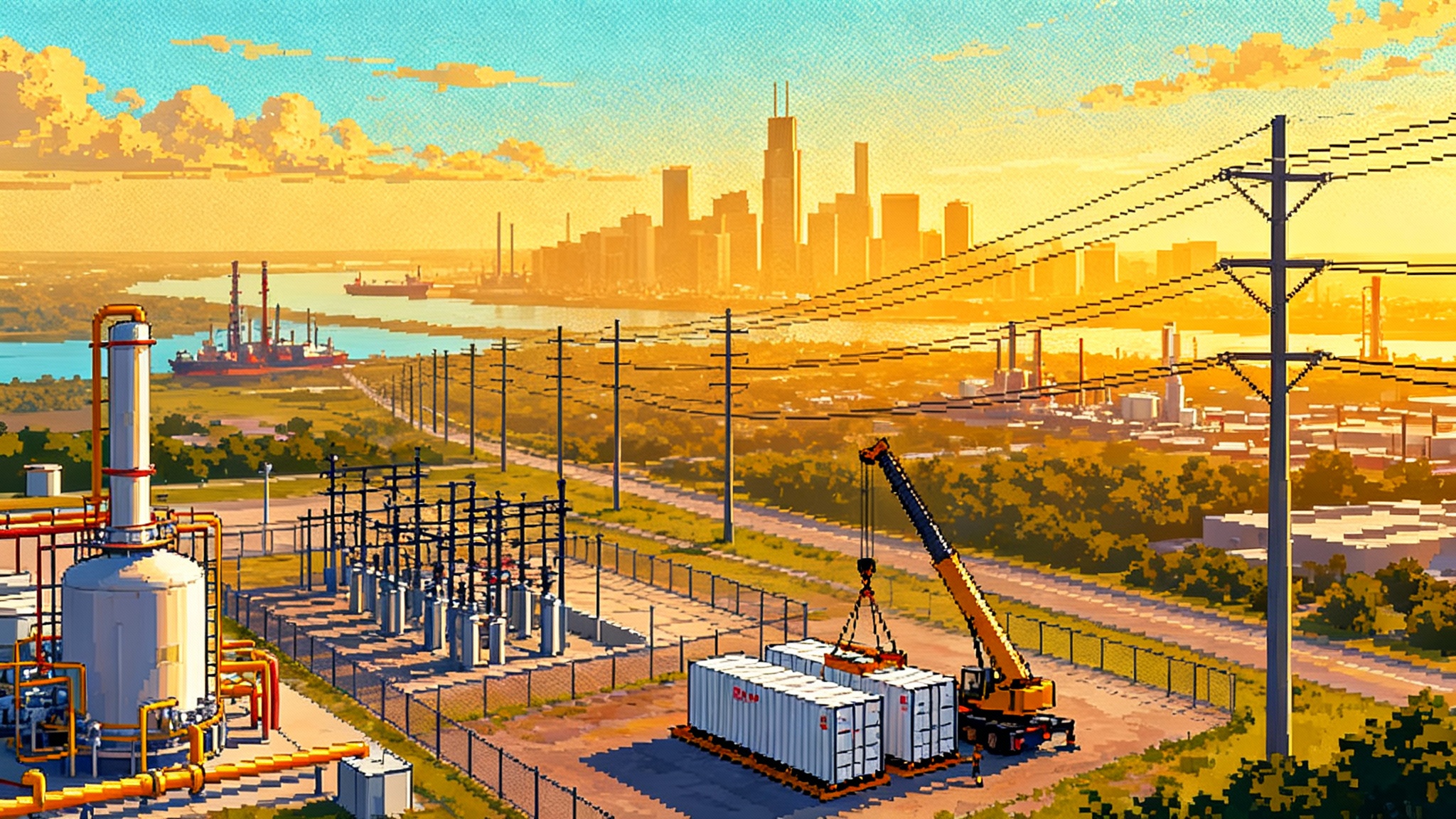LEU+ and HALEU mark 2025's pivot in U.S. nuclear fuel
With NRC approval for Urenco USA to produce LEU+ and DOE-backed HALEU output continuing at Piketon, the U.S. fuel cycle hits an inflection point. Here is how LEU+ bridges the gap to HALEU, what changes by 2028, and a practical playbook to lock supply.
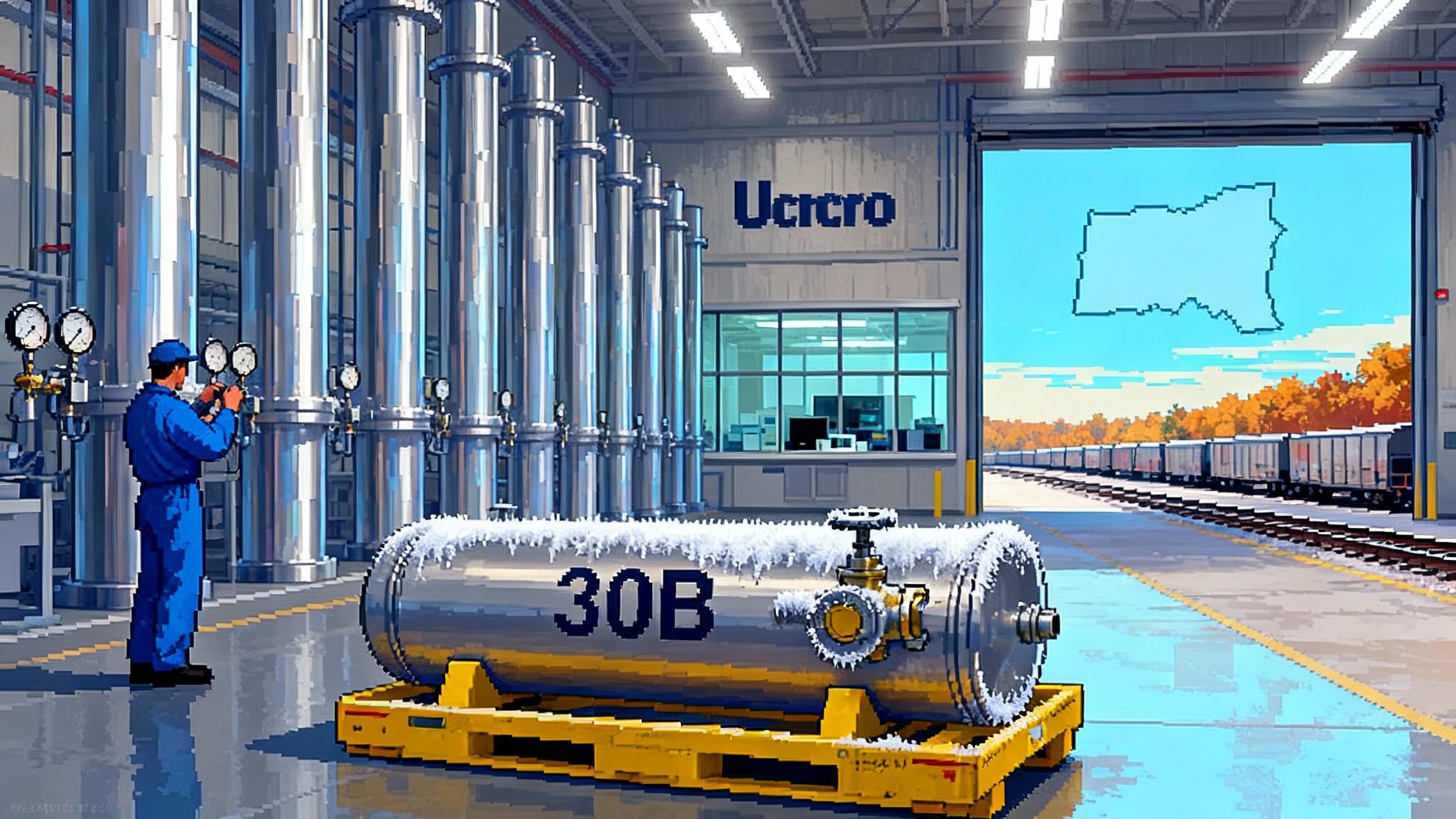
Breaking: a two-key turn of the fuel-cycle lock
On September 30, 2025, the Nuclear Regulatory Commission authorized Urenco USA to enrich uranium up to 10 percent U‑235 at its Eunice, New Mexico plant, creating the first commercial-scale source of so‑called LEU+ for the U.S. market. Initial LEU+ production starts this year, with first deliveries to fabricators in 2026. That single approval gives utilities and advanced reactor teams a new dial to turn between today’s 5 percent fuel and tomorrow’s HALEU. It also makes LEU+ a practical feedstock for future HALEU lines. NRC authorizes Urenco to 10 percent.
Three months earlier, the Department of Energy extended Centrus Energy’s HALEU production at Piketon, Ohio through June 30, 2026, after the company delivered 900 kilograms of HALEU under its demonstration contract. That extension keeps the only Western HALEU centrifuge cascade running while options for further years are on the table. DOE extends Centrus HALEU production.
Together, those moves change the near-term physics of supply. LEU+ unlocks performance in the current fleet and gives advanced designs a workable bridge, while the HALEU line at Piketon keeps the high-assay path alive and learnings flowing into the next cascades.
Why this matters now: the United States banned imports of Russian enriched uranium in 2024 with waivers that can run only into 2028. The waiver window gives industry time to rewire its supply, but it will close. A domestic ladder from LEU to LEU+ to HALEU is the cleanest way to climb. That shift also converges with the AI power crunch reshaping the grid, raising the value of every additional dependable megawatt hour.
The simple map: LEU, LEU+, HALEU
- Low enriched uranium, or LEU, is the standard fuel for today’s pressurized and boiling water reactors. It is typically enriched to about 3 to 5 percent U‑235.
- LEU+ raises enrichment into the 5 to 10 percent range. Think of it as turning the flame a notch higher on the same stove. More fissile content can support longer cycles and different core designs without crossing into the ruleset for HALEU.
- High-assay, low-enriched uranium, or HALEU, lives between 10 and 20 percent. That extra enrichment opens doors for advanced reactors that need compact cores, higher temperatures, different coolants, or alternative fuel forms like TRISO pebbles or metallic pins.
How LEU+ bridges the HALEU gap
Think of HALEU as high-octane fuel and the domestic supply chain as an engine in rebuild. LEU+ is the premium mid‑grade that keeps the fleet running well and helps finish the rebuild faster.
-
As a performance upgrade for the existing fleet. Fuel fabricated with 6 to 8 percent enrichment can enable longer operating cycles and fewer refueling outages. Fewer outages mean more megawatt hours per year at lower operating cost. Fuel vendors have been working through the methodical licensing steps to receive and handle higher enrichments. Those regulatory steps, such as transport approvals up to around 8 percent and facility amendments toward the six percent range, are the practical plumbing behind LEU+ adoption.
-
As a feedstock accelerator for HALEU. If a future HALEU facility starts with LEU+ rather than standard LEU, the last few percentage points of enrichment to reach 15 to 19.75 percent take fewer separative work units. That raises the output per machine and reduces the time to first kilograms from a new cascade.
-
As a blending tool for hybrid cores. Some advanced reactor developers are engineering core designs that can start on modest HALEU fractions supported by LEU+ backfill, then ramp enrichment as more HALEU becomes available. LEU+ makes that hybrid strategy more flexible.
The net effect: LEU+ buys time and optionality. It improves economics for today’s reactors while clearing a path for tomorrow’s.
What changes between 2026 and 2028
The fuel cycle is three industrial steps that must all be ready, in sequence: enrichment, deconversion, and fabrication. The posture of each is shifting now, with concrete milestones to watch.
1) Enrichment
-
Urenco USA’s Eunice plant is adding LEU+ capability across existing and future cascades. The near-term impact is twofold. First, it creates a domestic source of 5 to 10 percent enriched material usable by fabricators that qualify for it. Second, it supplies ideal feed for any HALEU cascades that the company or others build in the United States later in the decade.
-
Centrus Energy’s Piketon HALEU cascade continues under the DOE extension through June 30, 2026, after hitting the 900 kilogram delivery mark. The follow-on options under its contract allow DOE to keep purchasing at the demonstration rate while a larger plant is developed, subject to appropriations and performance. The most immediate technical learning here is in material handling, quality control, and cylinder logistics specific to HALEU uranium hexafluoride.
-
Orano has positioned Project IKE in Oak Ridge, Tennessee as a potential domestic enrichment site for LEU, LEU+, and later HALEU in the early 2030s, with interim capacity increases under way in France. The United States will not rely on that capacity for the 2026 to 2028 window, but power buyers should track U.S. licensing progress because long-term offtakes will influence a final investment decision.
What to watch: separative work unit additions, licensing amendments that expand enrichment envelopes, and contract announcements that tie volumes to dates. The key operational risks are machine installation schedules and workforce ramp.
2) Deconversion
Enrichment yields uranium hexafluoride gas. Fabricators need oxide powder, metallic uranium, or other forms. Deconversion is the chemical bridge between the two.
-
For the conventional fleet and for LEU+, deconversion to oxide is a mature step. The reopened Metropolis Works conversion plant in Illinois restores a domestic source of uranium hexafluoride from mined oxide. That frees up supply risk earlier in the chain and stabilizes feedstock for enrichers.
-
For HALEU, deconversion to oxide and to metal is the scarce piece. DOE awarded multiple companies contracts to provide HALEU deconversion. Parallel private investments are filling specific gaps. TerraPower and Framatome are standing up a metallization pilot in Washington to turn HALEU oxide into metal for fast reactor pins. BWX Technologies has commissioned new high-temperature furnaces in Virginia that expand the toolkit for advanced fuel forms, including additively manufactured shapes loaded with TRISO particles. These moves do not flood the market with capacity, but they unblock the next tests and early cores.
What to watch: which deconversion lines first qualify on HALEU material, the timelines for scaling beyond pilot scale, and the availability of the right cylinders and overpacks for HALEU transport and storage. The shortage of suitable cylinders slowed deliveries earlier in the year, a reminder that small hardware can become a big bottleneck.
3) Fabrication
Fuel fabrication is where uranium becomes assemblies, pebbles, or pins that reactors can load.
-
For light water reactors using LEU+, fabricators are moving stepwise through transport, facility, and process approvals to handle enrichments above 5 percent. Expect first commercial LEU+ reloads to appear mid‑decade at a few sites, then spread as utilities gain operational data.
-
For HALEU and TRISO, two U.S. production paths are emerging. X‑energy’s TRISO-X complex in Oak Ridge is under active construction with regulatory reviews targeting mid‑2026 decisions, positioning the first line to produce pebbles later in the decade for high temperature gas designs. BWXT, which already holds the most advanced licenses for TRISO production in the private sector, is expanding process capability and capacity for Department of Defense and civilian customers.
-
For metallic HALEU fuel, development is accelerating around metallization, cladding, and pin fabrication. Early pilot lines will tackle the tricky parts first, like material purity, microstructure control, and bonding techniques at scale.
What to watch: when the first Category II licensed TRISO line starts pebbles at commercial cadence, when fabricators complete LEU+ upgrades and ship first reloads, and which metallization pilots hit throughput milestones.
Deadlines that matter: the waiver clock and reload math
The United States barred Russian enriched uranium imports in 2024, with waivers available only until January 1, 2028. Many utilities still have Russian-origin supply intertwined in their multi-year reload plans. The practical deadline is not the letter of the law; it is the month your plant needs enriched material on site to start building assemblies. If your 2027 reload leans on a waiver, that means contracting and cylinder deliveries in 2026 and early 2027. The margin is thin. Transmission planning under FERC 1920-A transmission planning is a parallel constraint that can affect outage windows and backfeed strategies.
LEU+ is insurance against that squeeze. Higher enrichment can extend cycles and shift reloads a quarter or more, creating schedule room to replace a waiver-dependent delivery. It also allows blended cores where some assemblies are fabricated from newly contracted Western enrichment and conversion, buying time for follow-on lots.
The playbook: how to lock fuel before the bottlenecks bite
Here is a concrete, sequence-driven plan for two audiences: utilities running light water reactors and advanced reactor developers racing to first cores.
For utilities and fuel buyers
-
Contract LEU+ offtake now, tied to first deliveries in 2026. Anchor a multiyear tranche with optional volumes that trigger as your licensing steps complete. Pair that with reload design studies targeting extended cycles. Why: this secures early slots and makes your plant’s outage schedule less dependent on HALEU timelines.
-
Dual-qualify fabrication. Ask your primary fabricator to map facility and transport upgrades for LEU+, then bid a backup path with a second fabricator for at least one unit. Why: higher enrichment introduces new upstream and packaging steps; redundancy reduces schedule risk.
-
Secure conversion and cylinder logistics. Reserve conversion capacity at Metropolis Works through your trader or integrator and lock deliveries of the correct cylinder types for higher-enrichment material. Why: cylinder shortages already delayed HALEU handoffs this year. Treat cylinders like critical path equipment.
-
Add blending rights and flexibility clauses. Ensure your contracts let you blend LEU+ feed into your fabrication flow and allow partial-core LEU+ reloads. Why: flexibility lets you stretch cycles and rebalance inventories if a supplier slips.
-
Hedge separative work units separately from uranium. Build SWU strips that match your LEU+ and LEU reload plans and stage delivery windows to your outage dates. Why: SWU pricing and availability are diverging from yellowcake markets as capacity expansions ramp.
-
Model waiver exposure month by month. For every unit, list reload dates through 2028, note any lot tied to a waiver, and identify the earliest on-site date for cylinders and enriched UF6. Then assign a LEU+ action, a supplier backstop, or a cycle extension tactic to each exposure month. Why: this turns a policy risk into a manageable checklist.
For advanced reactor developers
-
Stack your HALEU supply like a capital plan. Combine DOE allotments, domestic offtakes from Piketon, and conditional volumes from future cascades. Write options that convert as you hit design and licensing gates. Why: diverse, staged supply beats a single bet.
-
Reserve deconversion and metallization slots now. Even a pilot line can be a critical path for the first core. Book the time, buy the tooling slots, and fund shared qualification runs that generate data for your safety case. Why: chemistry and metallurgy drive fuel qualification timelines.
-
Lock a fabrication path with a specific form factor. For TRISO, reserve pebble or compact throughput at your chosen facility and define the exact kernel composition. For metal fuel, tie pin fabrication to a metallization partner with demonstrated process control. Why: fuel geometry choices ripple into licensing, core physics, and supply.
-
Use LEU+ to derisk first criticality. If your design can start with a partial-core LEU+ approach or run at a conservative power density on LEU+ for initial testing, write that into your fuel plan. Why: it gives schedule insurance if HALEU availability tightens in 2027.
-
Pre-buy cylinders and specialized transport packages. Do not assume a logistics provider will have HALEU-suitable packages on the shelf. Fund fabrication or refurbishment well ahead of first product. Why: this is one of the quietest bottlenecks in the chain.
-
Publish your fuel bill of materials to suppliers. Share a clear, line-item list of forms, enrichments, loadings, claddings, and delivery windows. Update it quarterly. Why: it lets partners plan capital and hiring against your real needs, not headlines.
Winners, bottlenecks, and fast paths to scale
-
Winners
- Urenco USA gains first mover advantage in LEU+, with a route to feeding future HALEU. Early contracts will likely carry premium terms for priority delivery windows.
- Centrus Energy earns operating experience in HALEU that competitors cannot shortcut. The more kilograms it processes, the faster procedures, training, and quality systems mature.
- BWX Technologies and X‑energy build fabrication credibility. When core designers need a place to turn uranium into qualified fuel, the shops with licenses, equipment, and data will win.
- ConverDyn’s Metropolis Works stabilizes conversion, making it easier to schedule enrichment and deconversion around a domestic UF6 source.
-
Bottlenecks
- HALEU deconversion to metal. Pilot plants must prove repeatability, impurity control, and throughput. Until then, metallic fuel programs will be gated by a few furnaces and teams.
- Licensed cylinder and package availability. The right containers for higher enrichment are in short supply. Without them, material sits.
- Skilled workforce at cascade scale. Building and running centrifuge halls and fuel shops requires technicians and engineers who are in high demand across energy, aerospace, and defense.
-
Fast paths
- Use LEU+ to extend cycles across a subset of the fleet, starting with units that already have accident tolerant fuel experience. That concentrates learning and frees outage space.
- Pre fund shared deconversion and metallization test campaigns that multiple developers can use for data. The goal is to qualify processes once, not many times in parallel.
- Standardize cylinder specifications and a pooled refurbishment program across buyers. Treat cylinders like a managed fleet with preventive maintenance and shared spares.
What this means in dollars and days
A single avoided refueling outage saves a plant millions of dollars and clears weeks of calendar time. If LEU+ lets you push an outage from late 2027 into 2028, you may remove a waiver dependency and replace it with contracted Western supply. If a HALEU pilot line delivers its first 100 kilograms in 2026 rather than 2027, a developer’s fuel qualification tests can start a season earlier. These small shifts stack.
On the cost side, expect LEU+ to price at a premium to standard LEU on both the SWU and fabrication lines, especially in the first wave. The premium is not just enrichment; it is also scheduling, packaging, and handling. For HALEU, early kilograms will be expensive. The payoff is de risked schedules and the operating data that follows.
The 2028 checkpoint
Here is the likely picture by the end of 2028 if buyers move now:
- Multiple U.S. fabricators are shipping LEU+ reloads, with a handful of plants on extended cycles and a larger tail adopting in 2029 and 2030.
- HALEU production at Piketon continues while additional cascades are in late-stage licensing or early-stage installation, informed by real operating data.
- At least one TRISO line is running at commercial cadence with a second in commissioning. Metallic HALEU fuel has proven metallization and pin fabrication at pilot scale and is moving into first of a kind cores.
- Cylinder fleets are less of a bottleneck because large buyers pre bought and pooled inventory. The logistics market has adjusted pricing and capacity to the new mix of enrichment levels.
Utilities that left plans tied to waivers will be compressing schedules or paying to reshuffle outages. Developers that did not book deconversion and fabrication slots early will wait on scarce equipment and people.
The bottom line
The combination of Urenco’s LEU+ authorization and DOE backed HALEU production at Piketon is more than a headline. It is a handoff point. LEU+ gives the current fleet and near term designs a practical tool to extend cycles and hedge risk. HALEU continues to move from press release to production, kilogram by kilogram, with the messy details of cylinders, furnaces, and shop floors getting worked out in public.
If you buy fuel, act like 2028 is tomorrow. Write LEU+ into your reload plans, book fabricators for higher enrichment, and treat cylinders like critical equipment. If you build advanced reactors, stack your HALEU supply, reserve deconversion and fabrication capacity, and codify a LEU+ fallback. The winners will be the teams that turn today’s authorizations into firm delivery schedules and show their boards a clean, dated path from gas in a cylinder to fuel in a core.
That is how a domestic, U.S. led nuclear fuel chain becomes real: one license, one pilot, and one delivery at a time, with LEU+ as the bridge and HALEU as the destination.
